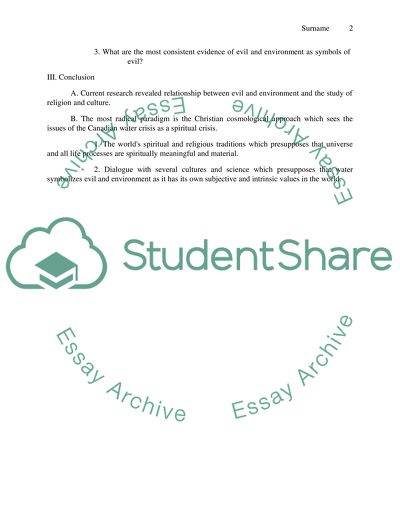Cite this document
(“Evil, its symbols and the environment Essay 1 Example | Topics and Well Written Essays - 1500 words”, n.d.)
Evil, its symbols and the environment Essay 1 Example | Topics and Well Written Essays - 1500 words. Retrieved from https://studentshare.org/religion-and-theology/1489636-evil-its-symbols-and-the-environment-essay
Evil, its symbols and the environment Essay 1 Example | Topics and Well Written Essays - 1500 words. Retrieved from https://studentshare.org/religion-and-theology/1489636-evil-its-symbols-and-the-environment-essay
(Evil, Its Symbols and the Environment Essay 1 Example | Topics and Well Written Essays - 1500 Words)
Evil, Its Symbols and the Environment Essay 1 Example | Topics and Well Written Essays - 1500 Words. https://studentshare.org/religion-and-theology/1489636-evil-its-symbols-and-the-environment-essay.
Evil, Its Symbols and the Environment Essay 1 Example | Topics and Well Written Essays - 1500 Words. https://studentshare.org/religion-and-theology/1489636-evil-its-symbols-and-the-environment-essay.
“Evil, Its Symbols and the Environment Essay 1 Example | Topics and Well Written Essays - 1500 Words”, n.d. https://studentshare.org/religion-and-theology/1489636-evil-its-symbols-and-the-environment-essay.


